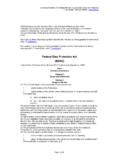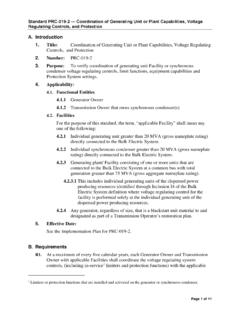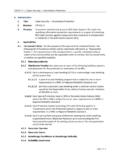Transcription of General Assembly 24 February 2010 - UNICEF
1 United NationsA/RES/64/142* General AssemblyDistr.: General24 February 2010 Sixty-fourth sessionAgenda item 6409-47035**0947035*Please recycle Resolution adopted by the General Assembly [on the report of the Third Committee (A/64/434)]64 for the Alternative Care of ChildrenThe General Assembly ,Reaffirmingthe Universal Declaration of Human Rights1and the Convention on the Rights of the Child,2and celebrating the twentieth anniversaryof the Convention in 2009,Reaffirming alsoall previous resolutions on the rights of the child of the Human Rights Council, the Commission on Human Rights and the General Assembly , the most recent being Council resolutions 7/29 of 28 March 2008,39/13 of 24 September 20084and 10/8 of 26 March 20095and Assembly resolution 63/241 of 24 December 2008,Consideringthat the Guidelines for the Alternative Care of Children, the text of which isannexed to the present resolution.
2 Set out desirable orientations for policy and practice with the intention of enhancing the implementation of the Convention on the Rights of the Child and of relevant provisions of other international instruments regarding the protection and well-being of children deprived of parental care or who are at risk of being so, Guidelines for the Alternative Care of Children, as contained in the annex to the present resolution, as a set of orientations to help to inform policyand practice; to take the Guidelines into account and to bring them to the attention of the relevant executive, legislative and judiciarybodies of government, human rights defenders and lawyers, the media and the public in General ;_____* Reissued for technical reasons on 13 April 217A (III).
3 2 United Nations, Treaty Series, , Official Records of the General Assembly , Sixty-third Session, Supplement (A/63/53), , Supplement (A/63/53 ), , Sixty-fourth Session, Supplement (A/64/53), , Secretary- General , within existing resources, to take steps to disseminate the Guidelines in all the official languages of the United Nations, including by transmitting them to all Member States, regional commissions and relevant intergovernmental and non-governmental meeting18 December 2009 AnnexGuidelines for the Alternative Care of present Guidelines are intended to enhance the implementation of the Convention on the Rights of the Child2and of relevant provisions of other international instruments regarding the protection and well-being of children who are deprived of parental care or who are at risk of being the background of these international instruments and taking account of the developing bodyof knowledge and experience in this sphere, the Guidelines set out desirable orientations for policy and practice.
4 Theyare designed for wide dissemination among all sectors directly or indirectlyconcerned with issues relating to alternative care, and seek in particular:(a)To support efforts to keep children in, or return them to, the care of their family or, failing this, to find another appropriate and permanent solution, including adoption and kafalaof Islamic law;(b)To ensure that, while such permanent solutions are being sought, or in cases where they are not possible or are not in the best interests of the child, the most suitable forms of alternative care are identified and provided, under conditions that promote the child s full and harmonious development;(c)To assist and encourage Governments to better implement their responsibilities and obligations in these respects, bearing in mind the economic, social and cultural conditions prevailing in each State.
5 And(d)To guide policies, decisions and activities of all concerned with social protection and child welfare in both the public and the private sectors, including civil principles and child and the family being the fundamental group of society and the natural environment for the growth, well-being and protection of children, efforts should primarilybe directed to enabling the child to remain in or return to the care of his/her parents, or when appropriate, other close family members. The State should ensure that families have access to forms of support in the caregiving child and young person should live in a supportive, protective and caring environment that promotes his/her full potential.
6 Children with inadequate or no parental care are at special risk of being denied such a nurturing the child s own familyis unable, even with appropriate support, to provide adequate care for the child, or abandons or relinquishes the child, the State is responsible for protecting the rights of the child and ensuring appropriate alternative care, with or through competent local authorities and dulyauthorized civil society organizations. It is the role of the State, through its competent authorities, to ensure the supervision of the safety, well-being and development of anychild placed in alternative care and the regular review of the appropriateness of the care arrangement decisions, initiatives and approaches falling within the scope of the present Guidelines should be made on a case-by-case basis, with a view, notably, to ensuring the child s safety and security, and must be grounded in the best interests and rights of the child concerned, in conformity with the principle of non-discrimination and taking due account of the gender perspective.
7 Theyshould respect fullythe child s right to be consulted and to have his/her views dulytaken into account in accordance with his/her evolving capacities, and on the basis of his/her access to all necessaryinformation. Everyeffort should be made to enable such consultation and information provision to be carried out in the child s preferred applying the present Guidelines, determination of the best interests of the child shall be designed to identify courses of action for children deprived of parental care, or at risk of being so, that are best suited to satisfying their needs and rights, taking into account the full and personal development of their rights in their family, social and cultural environment and their status as subjects of rights, both at the time of the determination and in the longer term.
8 The determination process should take account of, inter alia, the right of the child to be heard and to have his/her views taken into account in accordance with his/her age and should develop and implement comprehensive child welfare and protection policies within the framework of their overall social and human development policy, with attention to the improvement of existing alternative care provision, reflecting the principles contained in the present part of efforts to prevent the separation of children from their parents, States should seek to ensure appropriate and culturallysensitive measures:(a)To support familycaregiving environments whose capacities are limited by factors such asdisability, drug and alcohol misuse, discrimination against families with indigenous or minoritybackgrounds, and living in armed conflict regions or under foreign occupation.
9 (b)To provide appropriate care and protection for vulnerable children, such as child victims of abuse and exploitation, abandoned children, children living on the street, children born out of wedlock, unaccompanied and separated children,internallydisplaced and refugee children, children of migrant workers, children of asylum-seekers, orchildren living with or affected by HIV/AIDS and other serious efforts should be made to tackle discrimination on the basis of any status of the child or parents, including poverty, ethnicity, religion, sex, mental and physical disability, HIV/AIDS or other serious illnesses, whether physical or mental, birth out of wedlock, and socio-economic stigma, and all other statuses and circumstances that can give rise to relinquishment, abandonment and/or removal of a decisions concerning alternative care should take full account of the desirability, in principle, of maintaining the child as close as possible to his/her habitual place of residence, in order to facilitate contact and potential reintegration with his/her familyand to minimize disruption of his/her educational, cultural and social regarding children in alternative care, including those in informal care.
10 Should have due regard for the importance of ensuring children a stable home and of meeting their basic need for safe and continuous attachment to their caregivers, with permanencygenerallybeing a key must be treated with dignityand respect at all times and must benefit fr om effective protection from abuse, neglect and all forms of exploitation, whether on the part of care providers, peers or third parties, in whatever care setting they mayfind of a child from the care of the family should be seen as a measure of last resort and should, whenever possible, be temporaryand for the shortest possible duration. Removal decisions should be regularlyreviewed and the child s return to parental care, once the original causes of removal have been resolved or have disappeared, should be in the best interestsof the child, in keeping with the assessment foreseen in and material poverty, or conditions directlyand uniquelyimputable to such poverty, should never be the onlyjustification for the removal of a child fr om parental care, for receiving a child into alternative care, or for preventing his/her reintegration.


















